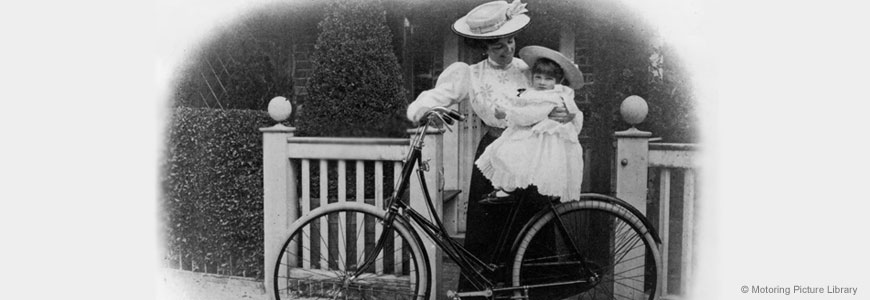
We are pleased to introduce a brand new blog from National Motor Museum Guide, Sarah Crofts. Exploring the fascinating subject of women in motorsport and social history from the 1880s, in this edition discover how Victorian women took their first step to freedom with a surprising vehicle – the bicycle!
RESPECTABILITY & ETIQUETTE
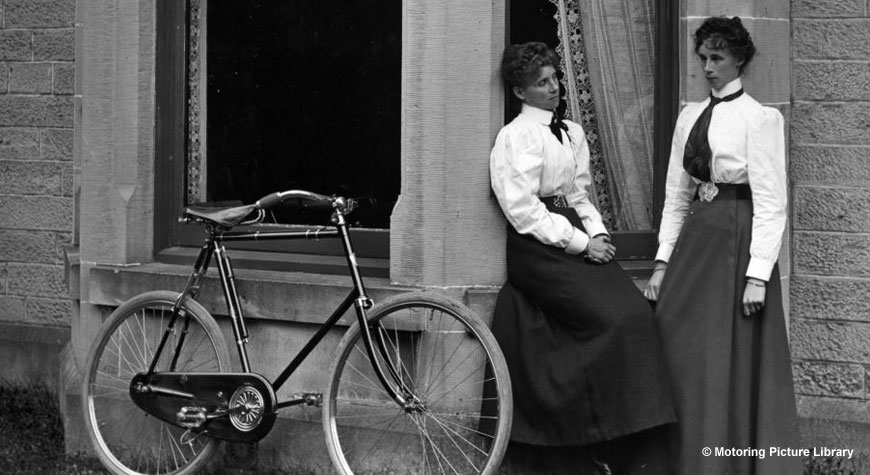
For privileged classes of the Victorian Era, social etiquette and how they conducted themselves was of the utmost importance. Indeed, the expression ‘strait laced’ derives from the corset, perceived as an essential item of clothing for ladies; very much an indication of breeding and that the woman was ‘kept.’ This naturally highlighted her vulnerability. Rather shockingly, those bold enough not to wear their corsets were considered as being ‘morally suspect.’ Some doctors even went as far to claim that they strengthened womens’ otherwise weak bodies!
CLOTHING CHALLENGES
As well as all those constricting corsets women had a number of rather ‘weighty’ issues in the form of full-length dresses and skirts, layers of unwieldy petticoats, laced boots and shoes; not forgetting that quirky stylish hat and gloves to perfect the ensemble! The combined weight of all of these could easily add a further seven pounds in weight which is exactly the same as a gallon of petrol – no wonder they tired easily and mobility was so restricted!
It is fundamentally clear that for respectable Victorian ladies the tricycle remained the only acceptable mode of transport, if conservatively ridden, up until almost 1890. Not only did the women have the problem of their long dresses and skirts constantly riding up over their knees, they did not even have a proper saddle! Initially they would have to perch on a low cushioned seat positioned some distance from the pedals- these were known as rear steerers. If women dared reveal shapely ankles this was ‘absolutely shocking.’ Women sometimes went as far as sewing large amounts of shot into their hemlines whilst another alternative was to fasten the front of the skirts and dresses to their boots to spare their blushes! Later on, when the saddle became available the women were able to sit in a more upright position and despite initial discomfort, most persevered.
RIDICULE & ABUSE
Even before it became acceptable for women to ride their bicycles they faced ridicule and fierce opposition from the men; sometimes other women. This was mainly due to an element of society who felt strongly that ‘machinery and athletic activity should remain part of a man’s world and that a woman’s world should remain distinct and separate.’ Imagine how unpleasant it must have been for these women forced to hide away from prying eyes whilst practising balancing on their bicycles in secluded areas, early in the morning; rather than face a torrent of abuse and sometimes having sticks and stones thrown at them.
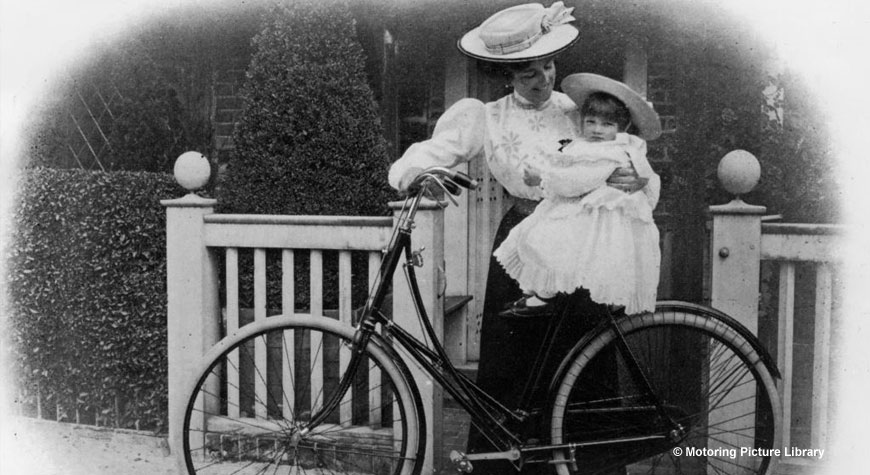
REVOLUTION IN THE AIR
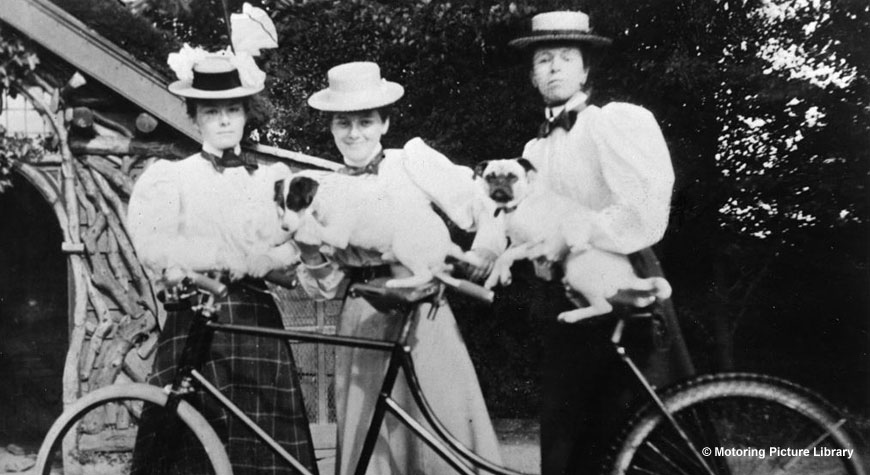
The first hint of revolution came with the popularity of the tandem – often referred to as the ‘sociable.’ These were designed with the effect that the young lady could sit in front enabling the strong male to use the pedals. Gradually two-wheeled bicycles came onto the market, more commonly known as the safety bicycle, around 1880 to 1890. These were very popular, but, again, there were a number of people who considered them to be ‘far too improper and dangerous for women to ride.’ Of course, this particular style of bicycle greatly enhanced mobility and had a profound impact on female emancipation. There is no doubt that the bicycle symbolised the ‘New Woman’ of the late 19th century, particularly in the Western World.
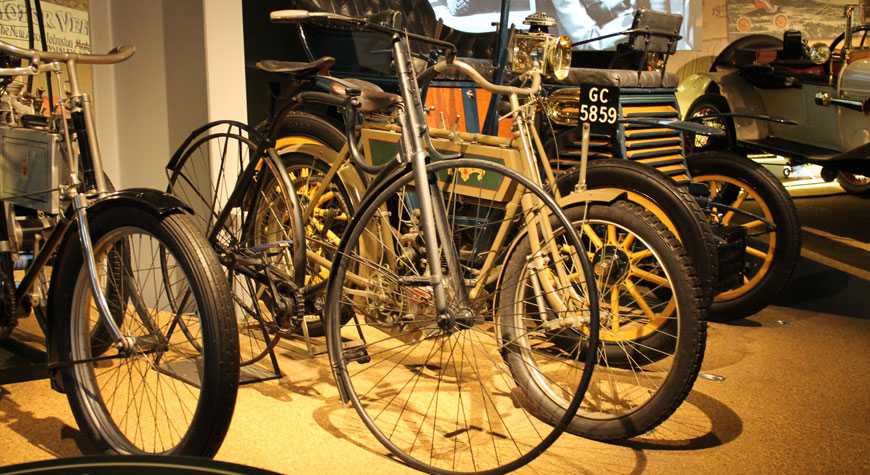
THE SOCIETY FOR RATIONAL DRESS
It was in 1881 that The Society for Rational Dress was founded in London. This was part of the Rational Dress Movement – the aspirational goal of dress reformers determined to free women from the so-called dictates of fashion. The members actively encouraged women to abandon their corsets, full length dresses and skirts and heavy footwear. This was exciting progress for any woman with modern attitudes who embraced the wonderful array of ‘bloomer-inspired fashions.’ In Paris they were regarded as positively ‘racey’ and ‘ultra chic’ – I am assuming, of course, they were referring to the female population! Sadly, they did not go down well in all circles including on one occasion the Mayor of New York who actually banned bloomers, declaring that they were a menace to the peace and good morals of the male residents!
The Society first took their cue from an influential American woman named Amelia Bloomer who, even in the mid 1800s wrote enthusiastically about ‘baggy pantaloons’, praising their usefulness in her temperance magazine, ‘The Lily.’
The Society were keen advocates of female cyclists wearing practical divided skirts but it was their co-founder and president, Lady Florence Harberton who took the bold step of declaring that she herself always wore her ‘Rationals.’ This was essentially a shorter skirt over a pair of bloomers. Despite this it was still the general consensus and opinion at that time in Victorian Britain that women of the upper and middle classes were expected to stay at home – content to occupy their time with traditional pastimes – embroidery, reading, music and traditional handicrafts.
FIRST STEP TO FREEDOM
In conclusion then, the Victorian Era was a time of profound growth and change that accelerated towards the end of the 19th century. Certainly, for the upper and middle classes leisure and sporting activities flourished and there was a strong desire to become fit, even athletic. No wonder those elegant demure ladies felt the need to throw off their corsets! Now, for the first time there were opportunities for badminton, roller skating, horseback riding, mixed doubles for tennis, dancing, boating on the Thames and trips to the seaside. Above all, it was the humble bicycle that gave these women a sense of well-being and freedom and heralding the end of chaperoning.
Next time: discover the astounding story of Berta Benz…
Sarah Crofts has been sharing her passion for motorsport with Beaulieu’s visitors since she first joined as a volunteer in 2007. Now a Museum Attendant, she has grown to love her role more and more and can’t imagine doing anything else! Sarah’s popular Women in Motorsport tour is one of several daily tours on offer in the National Motor Museum.
